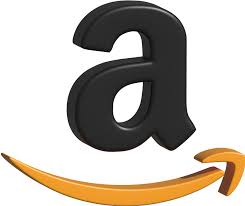Step 1: Research and Planning
Before you jump into selling on Amazon, it’s essential to do thorough research and create a solid plan. Here’s what you need to do:
- Market Research: Identify potential products to sell on Amazon by researching current trends, popular categories, and customer demands. Use tools like Amazon Best Sellers, Jungle Scout, or Helium 10 to analyze market trends and competition.
- Niche Selection: Choose a niche that aligns with your interests, expertise, and market demand. Narrow down your options based on profitability, competition level, and your ability to add value to the niche.
- Competitor Analysis: Study your competitors’ offerings, pricing strategies, customer reviews, and marketing tactics. Identify gaps in the market that you can exploit to differentiate your products.
- Business Plan: Outline your business goals, target audience, marketing strategies, financial projections, and operational logistics. A well-defined business plan will guide your decisions and help you stay focused on your objectives.

Step 2: Create an Amazon Seller Account
Once you have a clear plan in place, it’s time to create your seller account on Amazon. Follow these steps:
- Sign Up: Go to the Amazon Seller Central website and click on the “Start Selling” button.
- Account Information: Provide your business details, including your legal name, address, contact information, and tax identification number.
- Choose a Selling Plan: Amazon offers two types of selling plans: Individual and Professional. Select the plan that best suits your business needs and budget.
- Verify Identity: Amazon may require you to verify your identity by providing additional documents, such as a government-issued ID or utility bill.
- Payment Information: Set up your payment method to receive payments from Amazon for your sales.
- Agree to Terms: Read and agree to Amazon’s seller agreement and policies to complete the registration process.

Step 3: Product Sourcing and Inventory Management
After setting up your seller account, it’s time to source products and manage your inventory effectively:
- Product Sourcing: Choose reliable suppliers or manufacturers to source your products. You can opt for wholesale, dropshipping, private labeling, or manufacturing your own products.
- Quality Control: Ensure that your products meet high-quality standards and comply with Amazon’s guidelines and regulations. Conduct thorough quality checks to maintain customer satisfaction.
- Inventory Management: Use Amazon’s tools like Inventory Management and FBA (Fulfillment by Amazon) to track and manage your inventory levels. Maintain adequate stock to prevent stockouts and fulfill customer orders promptly.
- Shipping and Logistics: Decide on the shipping methods and carriers for transporting your products to Amazon’s fulfillment centers. Optimize your shipping processes to minimize costs and delivery times.

Step 4: Product Listing and Optimization
Creating compelling product listings is crucial for attracting customers and driving sales. Follow these steps to optimize your product listings:
- Title: Write descriptive and keyword-rich titles that accurately represent your product. Include relevant keywords that customers are likely to search for.
- Images: Use high-quality images that showcase your product from multiple angles. Follow Amazon’s image guidelines regarding size, resolution, and background.
- Bullet Points: Highlight key features, benefits, and specifications of your product in concise bullet points. Focus on addressing customer pain points and highlighting unique selling points.
- Description: Write detailed and engaging product descriptions that provide additional information and context. Use persuasive language to entice customers to make a purchase.
- Keywords: Research relevant keywords using tools like Amazon’s Keyword Tool or third-party keyword research tools. Incorporate these keywords naturally into your product listing for better visibility in search results.
- Backend Keywords: Utilize backend search terms to include additional keywords that may not fit naturally into your product listing. These keywords help improve your product’s discoverability without cluttering the visible listing.

Step 5: Pricing and Profitability
Setting the right price for your products is crucial for maximizing profitability and staying competitive. Here’s how to determine your pricing strategy:
- Cost Analysis: Calculate the total cost of acquiring, producing, and selling your products, including manufacturing costs, shipping fees, Amazon fees, and overhead expenses.
- Competitive Analysis: Research competitors’ prices and analyze their pricing strategies. Set your prices competitively based on market trends, customer demand, and perceived value.
- Profit Margin: Determine your desired profit margin for each product and adjust your pricing accordingly. Strike a balance between profitability and competitiveness to attract customers while maximizing profits.
- Promotions and Discounts: Offer occasional promotions, discounts, or bundle deals to attract customers and stimulate sales. Use Amazon’s promotional tools like Lightning Deals or Coupons to create limited-time offers.

Step 6: Fulfillment and Shipping
Choose the most suitable fulfillment method for your business to ensure timely delivery and customer satisfaction:
- Fulfillment by Amazon (FBA): Opt for FBA to leverage Amazon’s fulfillment network for storage, packing, and shipping your products. FBA offers benefits like Prime eligibility, faster delivery, and enhanced customer trust.
- Fulfillment by Merchant (FBM): Fulfill orders yourself using FBM if you prefer to handle inventory storage and shipping independently. Maintain efficient shipping processes to meet Amazon’s delivery standards and customer expectations.
- Shipping Optimization: Streamline your shipping processes to minimize costs and delivery times. Negotiate discounted shipping rates with carriers, use shipping software for label printing and order management, and optimize packaging to reduce dimensional weight.

Step 7: Marketing and Promotion
Promote your products effectively to increase visibility, drive traffic, and boost sales on Amazon:
- Amazon PPC Advertising: Launch Amazon Sponsored Products or Sponsored Brands campaigns to target relevant keywords and increase your product’s visibility in search results. Monitor campaign performance and optimize your ad spend to maximize ROI.
- Enhanced Brand Content (EBC): Create compelling EBC or A+ Content to enhance your product listings with rich multimedia content, such as images, videos, and enhanced product descriptions. EBC helps improve conversion rates and customer engagement.
- Social Media Marketing: Use social media platforms like Facebook, Instagram, and Twitter to promote your products and engage with your target audience. Share product updates, customer testimonials, and special offers to drive traffic to your Amazon listings.
- Email Marketing: Build an email list of customers and prospects and send regular newsletters, product updates, and promotional offers. Use email marketing tools to automate campaigns and personalize content based on customer preferences.

Step 8: Customer Service and Feedback Management
Provide exceptional customer service to build trust, loyalty, and positive reviews:
- Responsive Communication: Respond promptly to customer inquiries, messages, and feedback to address their concerns and provide assistance. Offer multiple channels of communication, such as email, phone, and live chat, for customer support.
- Order Fulfillment: Ensure accurate and timely order fulfillment to meet Amazon’s delivery standards and exceed customer expectations. Provide shipment tracking information and proactive updates on order status to keep customers informed.
- Feedback Management: Monitor customer feedback and reviews on your product listings and seller profile. Address negative feedback promptly by resolving issues, offering refunds or replacements, and seeking constructive feedback for improvement.
- Seller Performance Metrics: Maintain high seller performance metrics, such as order defect rate, late shipment rate, and customer feedback score, to avoid account suspension or penalties. Monitor your performance dashboard regularly and take corrective actions as needed.

Step 9: Analyze Performance and Optimization
Continuously monitor your sales performance and make data-driven decisions to optimize your Amazon business:
- Sales Analytics: Use Amazon’s Seller Central dashboard or third-party analytics tools to track key performance metrics, such as sales revenue, units sold, conversion rate, and profit margin. Analyze sales trends and identify areas for improvement.
- Inventory Management: Monitor your inventory levels and sales velocity to prevent stockouts and overstocking. Use inventory forecasting tools to predict future demand and adjust your inventory replenishment strategies accordingly.
- Keyword Optimization: Regularly review and update your product listings with relevant keywords based on search trends and customer behavior. Experiment with different keywords, titles, and descriptions to improve your product’s discoverability and ranking.
- Performance Optimization: Continuously optimize your pricing, product selection, and marketing strategies based on performance data and market feedback. Stay agile and adapt to changing market conditions and consumer preferences to stay ahead of the competition.

Step 10: Scale and Expand Your Business
Once you’ve established a successful presence on Amazon, explore opportunities to scale and expand your business:
- Diversify Product Portfolio: Introduce new products or expand your product offerings to cater to different market segments or customer needs. Research market trends and customer preferences to identify profitable product opportunities.
- Expand to International Markets: Consider expanding your Amazon business to international marketplaces, such as Amazon EU, Amazon Japan, or Amazon Australia. Evaluate market demand, regulatory requirements, and logistics challenges before entering new markets.
- Brand Building and Innovation: Invest in building your brand identity and reputation on Amazon by delivering high-quality products, exceptional customer service, and innovative solutions. Build brand loyalty and trust among customers to differentiate yourself from competitors.
- Partnerships and Collaborations: Explore strategic partnerships with other sellers, brands, or influencers to cross-promote products, collaborate on exclusive offerings, or access new customer segments. Leverage synergies and collective resources to accelerate growth and market reach.
This guide covers everything you need to know to start selling on Amazon successfully.

